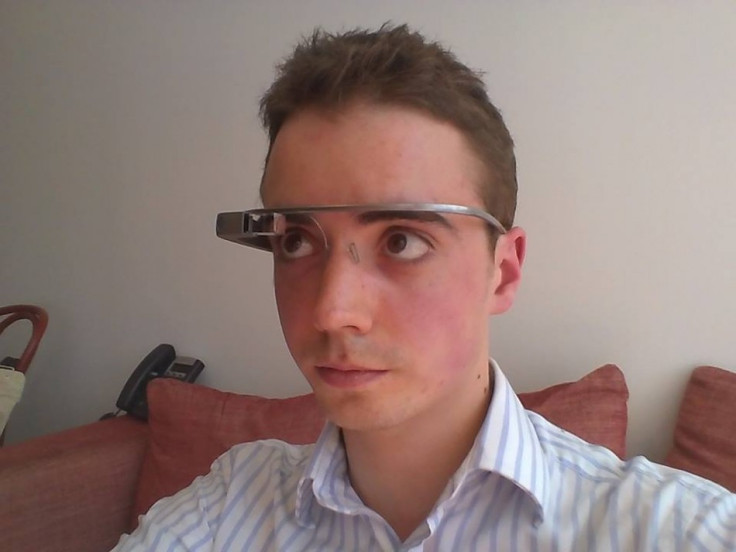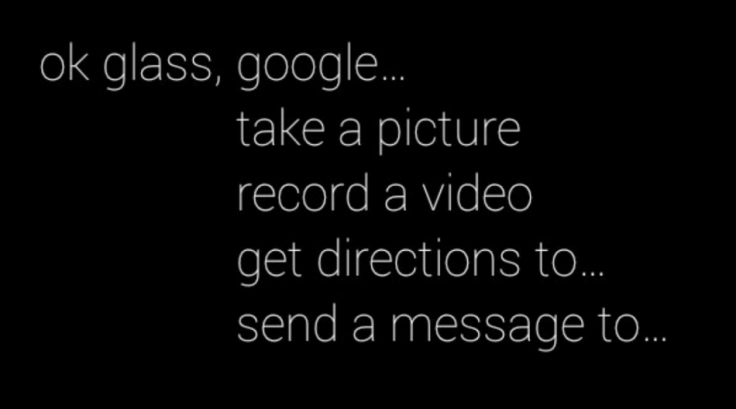Google Glass Explorer Edition: First Impressions
Technology reporter Alistair Charlton goes hands-on with Google Glass, the head-worn gadget with an HD camera, projector and internet connection that is as desirable as it is controversial.

Writing a review - even a short one like this - about Google Glass was never going to be straight forward. For a start it's not even a real product yet; in it's current Explorer Edition guise it's little more than a prototype, albeit one with smooth, shiny edges and a box Apple would be jealous of.
No, writing a review of Google Glass requires you to look deeper, at what the concept actually means and what it could become, rather than what it is physically.
Hardware
First, the easy bit. Apart from not folding for easy storage, Glass is just like a pair of glasses, in that it rests comfortably on your ears and nose; it's surprisingly light and well balanced, despite all of the components being on the right arm, leaving the left completely bare.
The similarities between Glass and glasses don't go much further however, unless you attach the included clear lenses or tinted sunglass-style lenses, which makes the device more socially acceptable.
Put Glass on your face, adjust the projector hovering over your right eye and you're now living in the future, but as good as that may sound, it's far from the finished product Glass's hardware might have you believe.
What's most difficult to explain about Glass is it's screen. A projector sits to the right of your temple, beaming an image outwards, which is then refracted through a prism and into your right eye. Anyone hoping to live like Tony Stark inside his Iron Man suit can stop reading now - it's nothing like that, as much as I hoped it would be.
No, the image sits a little higher and further to the right than you would expect. It's out of the way and you don't look through it like a head-up display, instead you must consciously look up and to the right to see it, as you would glance in a rear view mirror while driving.
Reading the display is easy enough, but I found it almost disappeared when looking out through a brightly lit window, and it seemed quite small despite Google claiming its 620x320 resolution resembles a 25in HD television viewed from eight feet away.
User interface
Glass' home screen shows the current time in a huge font with "ok, glass" written underneath. This is your Start button, your Finder.
Say: "ok glass" and the device starts to listen, prompting you with seven options of what to say next.

Because Glass only knows a few set phrases it is incredibly quick at working out what you are saying. Imagine you only knew seven phrases; you'd pick them up and master them quickly, no matter who was saying them and no matter what their accent. It even understood my Northern.
However, the next step was less successful. Taking a picture was fine, but getting directions to Waterloo station did a Google search for 'Asian'; Googling the company Rackspace returned search results for 'nice'.
Not perfect, but things will improve - try Google's voice search on Android or the iPhone app to understand how accurate future searches with Glass will be.
Moving away from those seven basic commands, Glass's user interface is a collection of cards similar to Google Now. Cards to the left of Home are future events (weather forecast, calendar entries), while cards on the right are from the past (photos taken, sports results, your inbox). Scrolling through these is done by swiping your finger across the panel over your right temple, which is basically a laptop trackpad.
A tap takes you one step deeper into each card; tap on a photo and sharing options appear, tap again and your contacts appear, swipe to find the right person, tap again, and the photo is shared to their Google+ page.
Other cards include your location, local weather, stock prices, news headlines, and this is where third party apps like Twitter, Facebook and Evernote will appear. Swipe down to return to the home screen.
Bone conduction
There are no headphones with Glass and no conventional speaker. Instead, Glass uses bone conduction technology to send vibrations through the right side of your skull and into your ear. It feels weird at first but you soon get used to it, and although quiet it's clear enough; putting a finger in your right ear amplifies, but because it's a vibration and not actual sound no one around you will hear it.
Turning Glass on or off can be done by tapping on the touch panel or by tilting your head up 30 degrees; this works well, but also turns Glass on or off every time you drink from a bottle.
Physically, that's how Glass feels and works. Of course this barely scratches the surface of what Glass can do, will do and isn't yet allowed to do, but answers to these will come over the next 12 months. Google is taking baby steps here and I don't blame it.
Conclusion
Glass is so new, so different, so alien; although it's components aren't any different to what we already have in our pockets as smartphones, combining them in this way creates an entirely different product unlike anything we've ever seen.
It will take time to be improved and refined, and even more time to be socially accepted by more than the most dedicated - and deep pocketed - of Google fans.
An iPhone moment, or the next Google Buzz/Wave/Nexus Q? Too early to say, but I can't remember the last time an unreleased product gained so much attention.
© Copyright IBTimes 2025. All rights reserved.






















